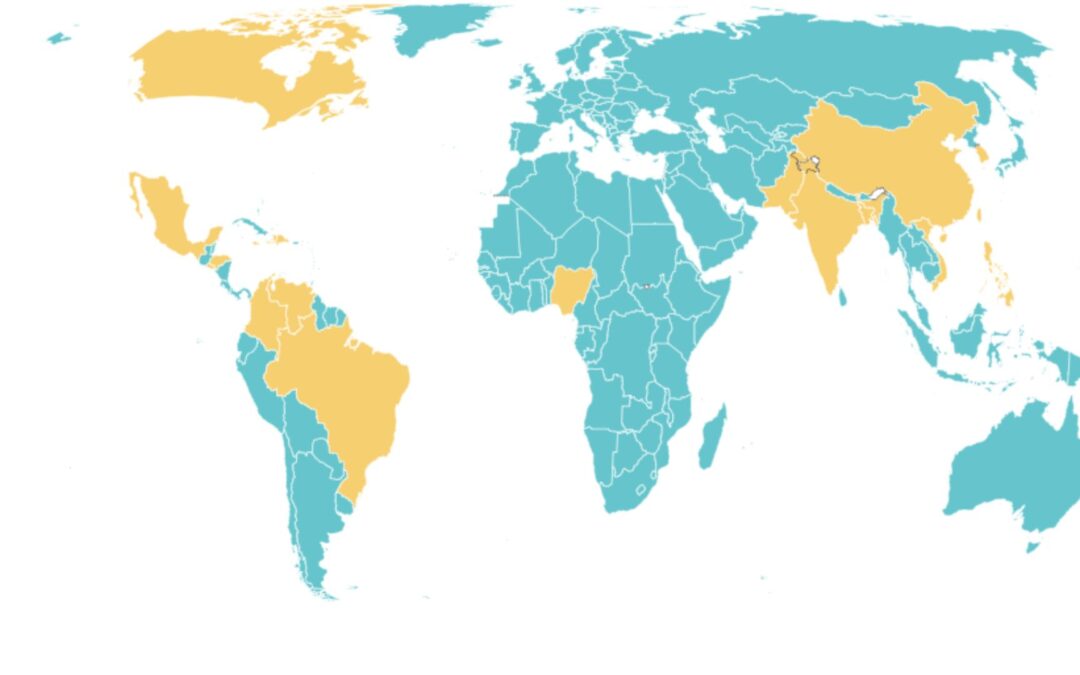In today's rapidly evolving business landscape, one concept stands out as a crucial driver of success: cultural equity. As businesses strive to adapt to a changing world and embrace diversity in all its forms, understanding and prioritizing cultural equity has become...
Map Shows Countries Eligible For US ‘Diversity’ Visas
by NICK MORDOWANEC.
People in most countries are eligible to apply for “diversity visas” (DVs) through the U.S. Department of State, though citizens in some of the biggest nations are ineligible due to past migration patterns.
The State Department annually administers the DV program, intended to admit up to 55,000 migrants during the 2025 fiscal year from countries with low immigration rates and allow them to ultimately gain citizenship through naturalization. Visa numbers differ from the number of naturalized citizens based on the different processes used to attain citizenship, which in some instances can take years based on legal status.
The “multi-step process with strict deadlines” consists of 10 tasks immigrants must complete prior to having their applications viewed and considered, including: submission of entries, the selection process, confirming of qualifications, submitting an immigrant visa and alien registration application, preparing and undergoing an interview based on information provided by a U.S. embassy or consulate, and ultimately being approved or denied.
Applications currently being weighed as part of the United States’ 2025 DV program are barring people from the following countries from applying due to more than 50,000 natives of each one of the countries migrating to the U.S. in the previous five years:
- Bangladesh
- Brazil
- Canada
- The People’s Republic of China (including mainland and Hong Kong born)
- Colombia
- Dominican Republic
- El Salvador
- Haiti
- Honduras
- India
- Jamaica
- Mexico
- Nigeria
- Pakistan
- Philippines
- Republic of Korea (South Korea)
- Venezuela
- Vietnam.
The entry period for the 2025 DV program occurred between October 4, 2023, and November 7, 2023. That year’s entrants were allowed to begin entering their confirmation information online on May 4, with entrants told to keep their numbers until at least September 30, 2025.
Entrants are selected randomly based on the number of available visas in each region and country. The law allows only one entry per person during each registration period. Those who attempt to submit two or more entries are disqualified.
A noncitizen generally must spend at least five years as a lawful permanent resident (LPR) to be eligible for naturalization, while a spouse of a U.S. citizen must spend at least three years as a lawful permanent resident.
“These individuals who are coming in on a Diversity Visa lottery, they still need to meet the naturalization requirements,” a U.S. Citizenship and Immigration Services (USCIS) spokesperson told Newsweek on Monday. “They’re coming in on green cards as legal permanent residents. They still need to meet the requirements of being here on a green card, moral character, all of that.”
Roughly 878,500 people were naturalized and became U.S. citizens in the 2023 fiscal year that annually begins October 1, according to data from USCIS. Naturalization ceremonies in fiscal 2022 and 2023 comprised 24 percent of all naturalizations over the past decade, according to the data.
The majority of naturalized citizens part of that 878,500 total were eligible based on being LPRs for at least five years, which accounted for about 82.9 percent of the total. Applicants who were eligible based on being lawful permanent residents (LPR) for at least three years and married to a U.S. citizen for three years accounted for 15.6 percent.
The median years spent as an LPR for all citizens naturalized in fiscal 2023 was seven years.
The following number of immigrants gained citizenship through the DV program in the respective fiscal years:
- FY 2020 – 29,600 (representing 4.7 percent of all naturalized citizens)
- FY 2021 – 34,000 (4.2 percent)
- FY 2022 – 48,400 (5 percent)
- FY 2023 – 120,700 (4.7 percent)
See Original Article at News Week









